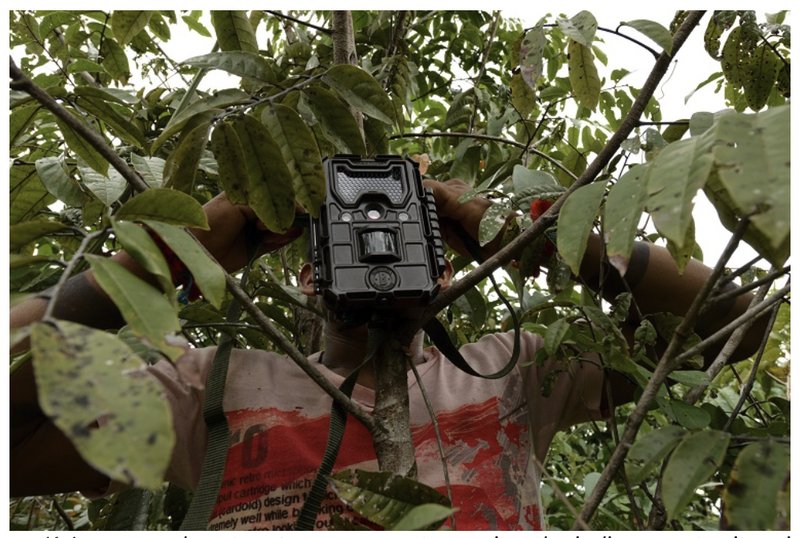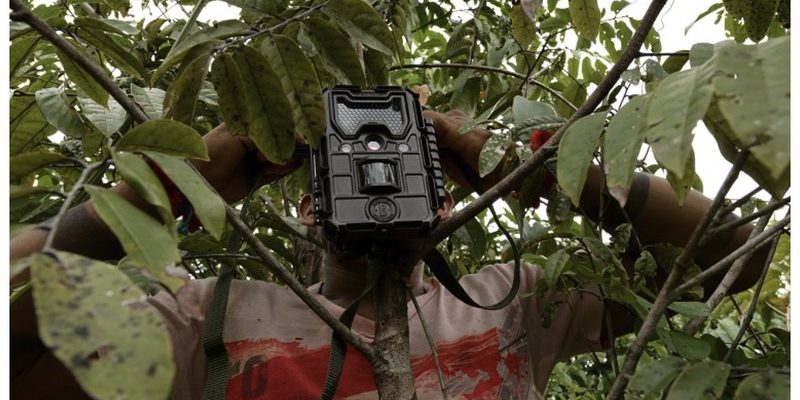
Imagine having the ability to track these creatures like you’re a detective on a case, piecing together their movements and behaviors. You set up your wildlife camera (like a popular model from Bushnell or Browning) and wait for the magic to happen. Today, we’ll dive into how these cameras work, why they’re so useful for monitoring botfly activity, and how anyone can get started with this rewarding endeavor.
How Wildlife Cameras Work
Wildlife cameras, often called trail cameras, are designed to capture high-quality images or videos of animals in their natural habitats. They’re equipped with sensors that detect motion, which means they only snap a picture when something’s moving in front of them. This technology can be as simple as infrared sensors or as sophisticated as models that sync with your smartphone for instant notifications.
You might be wondering about the different types of wildlife cameras available. Some have flash for night shots, while others use infrared lighting to avoid startling animals. Battery life also varies; some cameras can run for months, while others might need more frequent charging. Think about your goals—if you want to catch nocturnal critters, you’ll want a camera with good night vision capabilities.
When setting up your camera, consider location carefully. Placing it near water sources, trails, or signs of animal activity increases your chances of capturing those elusive moments. Once you find the perfect spot, you can sit back and let the camera do the work. It’s a bit like fishing—you wait patiently for the “big catch” but from the comfort of your own home!
Understanding Botflies: What Are They?
Botflies, specifically those in the Oestridae family, are fascinating yet troublesome insects. They’re known for their unique life cycle, which involves laying eggs on a host animal. When the eggs hatch, the larvae burrow into the host’s skin, causing irritation and health issues for the animal. This can lead to serious consequences for wildlife, making it essential to monitor their presence.
You may not realize, but different types of botflies target various animals. For example, the common horse botfly primarily affects equines, while squirrel botflies go after rodents. Each species has its own quirks and habits, so understanding these differences can help you tailor your monitoring approach.
Why care about botflies? Keeping an eye on their activity can aid in wildlife management and conservation efforts. If you see an increase in botfly activity in a particular area, it might signal a health issue for local wildlife populations. Plus, it’s a great way to gather data for researchers or conservationists who need insights into botfly behavior and their impact on ecosystems.
Setting Up Your Wildlife Camera for Botfly Monitoring
Ready to start your botfly-monitoring venture? First, choose the right wildlife camera that suits your needs. Look for features like **high-resolution images**, decent battery life, and good night vision. Some popular brands like **Browning** and **Bushnell** offer models with all these features and more.
Next, find a suitable spot to set up your camera. Look for areas with signs of botfly activity, such as animal tracks or fur. You can also consider locations near grazing areas where botflies are likely to interact with their hosts. Remember, the best spots are often where animals are most active—think about watering holes or trails leading to food sources.
When you set up the camera, make sure it’s at the right height and angle to capture the action. Most cameras have adjustable settings, so you can fine-tune the focus and framing based on the location. Don’t forget to check the settings for **motion detection** and **image resolution** before you walk away. Taking a few test shots can help ensure you’re ready for whatever wildlife may stroll by.
Monitoring and Analyzing the Footage
Once your camera is up and running, it’s time for the exciting part—waiting for footage! Depending on the camera and battery life, you might check it weekly or monthly. When you retrieve the footage, you’ll likely get a treasure trove of images or videos showcasing local wildlife, including potentially the botflies you’re interested in.
As you analyze the footage, pay attention to any signs of botfly activity. This could mean looking for animals exhibiting signs of discomfort, like constant itching or rubbing against trees. You might even see botflies themselves in the act of laying eggs, providing crucial insights for your monitoring efforts.
Keep notes as you go along. Document the time, date, and weather conditions when you spot botfly activity. This can help establish patterns over time. Perhaps you’ll notice more activity during certain seasons or after specific weather events, giving you a clearer picture of their lifecycle and impact on local wildlife.
Troubleshooting Common Issues with Wildlife Cameras
Like any tech, wildlife cameras can face hiccups along the way. One common issue is the camera failing to capture images. This could be due to a low battery, incorrect settings, or poor placement. If your camera isn’t picking up movement, double-check that it’s securely attached and properly angled.
Another problem might be related to memory storage. Make sure the memory card has enough space before you set off on your monitoring adventure. Sometimes, simply formatting the card can resolve stubborn issues and ensure you won’t miss those critical footage moments.
If you notice excessive blur in your photos, it might be time to adjust the camera’s focus settings. You can also experiment with different locations if you find that the angle is not capturing enough detail. Wildlife monitoring often involves trial and error, so don’t be disheartened by setbacks—just tweak and try again.
The Importance of Monitoring Botfly Activity
So, why does monitoring botfly activity matter? For starters, understanding their patterns helps in conservation efforts. If you notice spikes in activity, it might indicate that nearby wildlife needs more assistance or intervention. Additionally, data collected can contribute to larger research initiatives aimed at understanding how botflies affect various species.
Think about it: every image or video you capture adds to a larger puzzle. You’re not just observing wildlife; you’re actively participating in a crucial conversation about their health and well-being. This can lead to better educational resources or wildlife management strategies that help protect affected animals.
Plus, it’s a rewarding experience personally. You’ll likely gain a deeper appreciation for nature and its complex interactions. Watching the various species that share your monitoring area can spark curiosity, encourage outdoor adventures, and foster a connection with the environment around you.
Using wildlife cameras to monitor botfly activity is not only an exciting opportunity to engage with nature, but it also plays a significant role in wildlife conservation. By understanding this unique pest and its impact, you can contribute valuable insights that help protect vulnerable species. As you embark on this journey, remember to be patient, stay curious, and most importantly, have fun. Your wildlife camera is more than just a tool; it’s a window into the fascinating world that exists just outside your door. So grab your gear, find the perfect spot, and begin your adventure in wildlife observation today!

